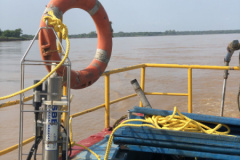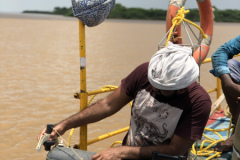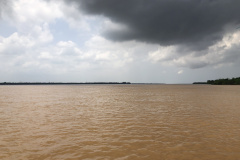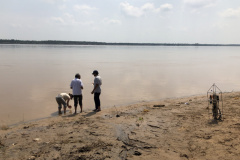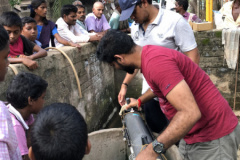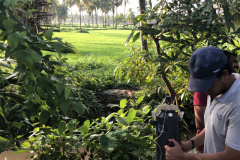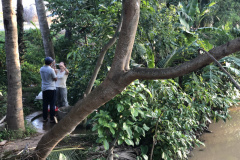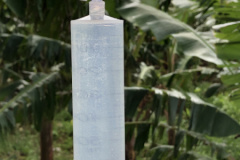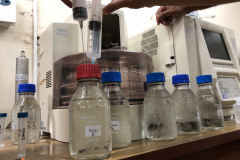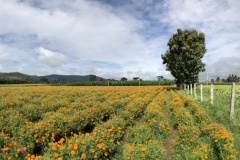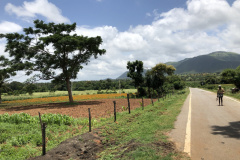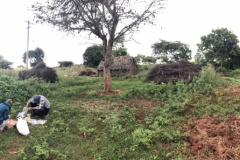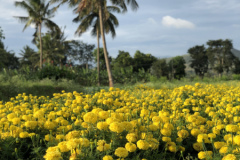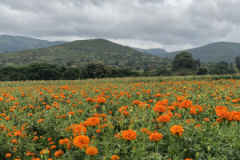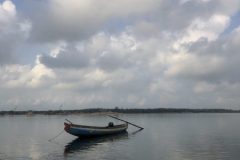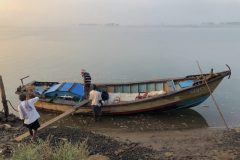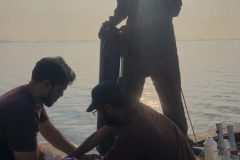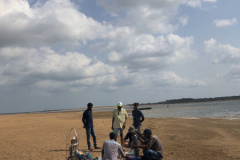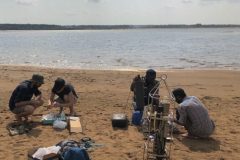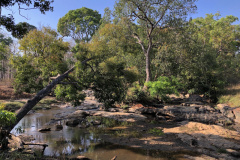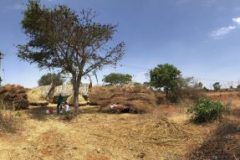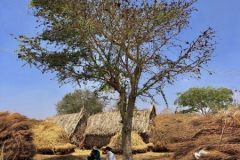NUNDERGROUND: Nutrients transfers through groundwater in India is a 3-year project (2018-2021) funded by the Indo-French Centre for the Promotion of  Advanced Research (CEFIPRA-IFCPAR). The project is also supported by the French National Research Institute for Sustainable Development (IRD).
Advanced Research (CEFIPRA-IFCPAR). The project is also supported by the French National Research Institute for Sustainable Development (IRD).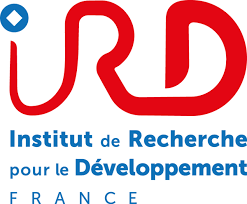
Abstract
Weathering and erosion supply gigantic amounts of macronutrients (C, N, Si, P) via the continental hydrosphere to estuaries and ocean where they sustain coastal ecosystems. Anthropogenic pressures have been recognised to modify these nutrients cycles and imbalance of nutrient ratios might yield to coastal eutrophication and harmful algal blooms. A key missing information is the contribution of groundwater (GW) to this nutrient transfer. Recent studies suggest that Submarine Groundwater Discharge, instead of rivers, is the dominant pathway of elements to the ocean. In India, GW source for irrigation has increased from 30% in 1950 to 61% in 2009 resulting in depletion of GW levels. Rapid increase in fertilizer use leads to GW contamination and becomes a key issue in water resource management since 60% of districts are facing problems with availability and/or quality of GW. There are a limited number of studies of GW biogeochemical processes and contribution to chemical budgets of Indian Ocean. NUNDERGROUND proposes to gather on-going complementary surveys from different labs in France and India adding advanced isotopic tools and expertise on C, N, Si, Ca, Sr, H2O to help
- Identifying the external sources (natural and anthropogenic) of macronutrients and carbon in Indian GW
- Characterizing GW processes that contribute to and modify their nutrient content
- Identifying the fate of GW macronutrients – and when possible estimate the fluxes, of nutrients to the estuaries and/or coastal ocean and to the atmosphere in the form of Greenhouse Gases (GHG)
- Understand the seasonal and regional variability of these transfers along land use, lithology and climatic gradients.
NUNDERGROUND take advantage from on-going efforts by Indo-French teams to combine expertise on GW processes from continental hydrogeologists and geochemists (IISc, GET, IEES) with biogeochemical expertise on estuaries (NIO and LOCEAN). To achieve this, we apply an advanced isotopic toolbox common to the studied systems that should provide the added value needed to unlock gaps in our current understanding on nutrient sources and processes in GW as well as their potential contribution to estuaries and coast. This includes measurements in GW of:
- Natural N and O isotopic compositions of NO3, NH4 and NO2, to identify N sources and processes;
- In situ incubations to measure rates of denitrification, nitrification (using 15N spikes), bacterial community respiration (O2 consumption), oxidation of CH4 and methanogenesis (aerobic and anaerobic incubations respectively);
- δ30Si to identify Si sources / processes (weathering, dissolution…)
- δ44Ca to decipher between carbonate vs. silicate weathering
- GHG concentrations (CO2, CH4, N2O) along with their natural C and N isotopic signatures to track fate of nutrients and organic matter within GW and potential loss to the atmosphere
- Water isotopes (δ18O and δD) as well as 87Sr/86Sr to identify origin of GW and mixing.
Collaborators
France
Damien Cardinal (French coordinator) and Sarath Pullyottum Kavil (IRD-SU Ph. D. student, 2019-2022), Laboratoire d’Océanographie et du Climat : Expérimentations et Approches Numériques (LOCEAN), Sorbonne Université, Paris
Mathieu Sébilo (Joint collaborator) and Véronique Vaury (Engineer), Institute of Ecology and Environmental Sciences (IESS), Sorbonne Université, Paris
Jean Riotte & Frédéric Guérin (Joint collaborators), Géosciences Environnement Toulouse (GET), IRD, Toulouse
India
V.V.S.S. Sarma (Indian coordinator), Busala Siva Kiran Kumar (CEFIPRA post-doc, 2018-2019) and Bobbili Sridevi (CEFIPRA post-doc, 2020-2021), National Institute of Oceanography – CSIR (NIO), Regional Centre of Visakhapatnam
Ramananda Chakrabarti (Joint collaborator), Center of Earth Sciences, Indian Institute of Science (IISc.), Bengaluru
Field trip during summer monsoon
In August 2019 we came back to Godavari estuary district (Andhra Pradesh) and Berambadi watershed (Karnataka) to sample groundwaters, stream, and estuaries during summer monsoon at the same sites as in dry season in March focusing on contrasted land uses (forest vs. farming).
Field trip during dry season
March 2019 sampling. Compare the difference in landscapes and water levels with August 2019…

